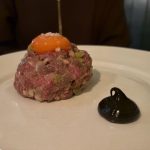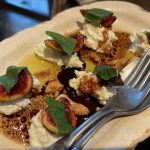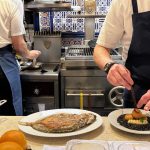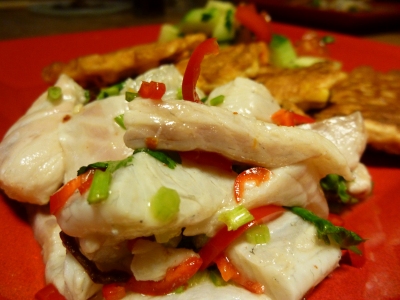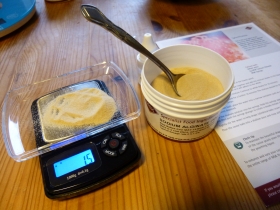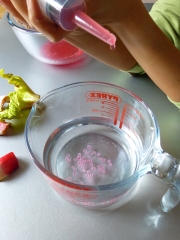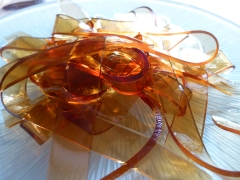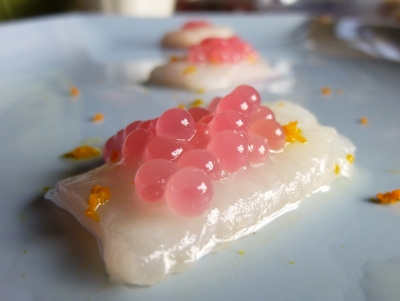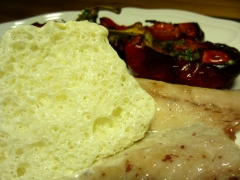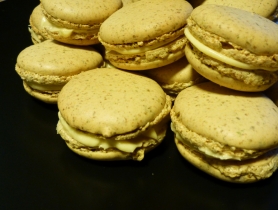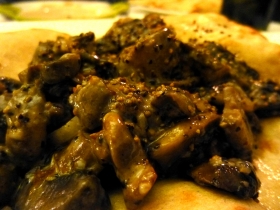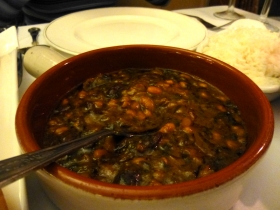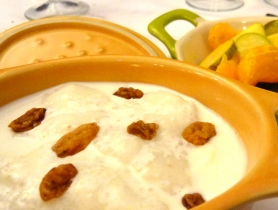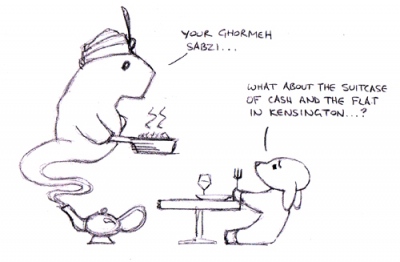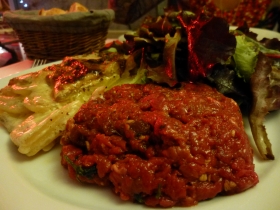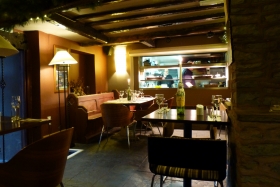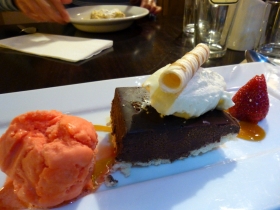There was an obscure kid’s cartoon on Saturday mornings while I was at University. It was called Samurai Pizza Cats, it was a parody of the Teenage Mutant Ninja Turtles (bwa?), and the main character’s name was Speedy Ceviche. At the time I had no idea what “ceviche” was, except that it was food related. And then a friend of mine found out for me, quite by chance: it is a Peruvian dish made by marinating raw fish in lime and chilli. I’ve no idea how he found out, as this was in the days before the internet had pictures or indeed search engines. Possibly he used a “book”.
There my knowledge languished, until another friend made a ceviche for me in his flat and I fell in love. With the ceviche, that is. My friend already had a lady and so did I, and I’m fairly sure we both prefer it that way.
And yet I’ve had nowhere near enough ceviche since, there being very few decent South American in the UK. We found some classic ceviches in Peru on our trip around the world, and some stunning modern examples in a chilled-out bar in Miami. More recently I enjoyed another good specimen at Ceviche in London. So why haven’t I just been getting my citrussy fish fix by making ceviche at home? Because… er…
What is this, the Spanish Inquisition?
Ceviche is dead easy to make. The best fish I’ve found is sea bass: it maintains a good texture, and isn’t too oily. That said, I also experimented with cod cheeks (cheap!), silver hake (cheaper!) and lemon sole. All were fine, but the sea bass was better. Lime is the usual marinade, but this is another dish where you just need to concentrate on the essentials and within that you can swap ingredients to your heart’s content. Essentials: (a) good fresh fish, cut into bite-sized pieces, (b) a marinade of citrus juices with whatever aromatics you like, (c) 15-20 minutes marinading, so there’s still some juicy uncooked fish in the middle. The recipe below is the classic, but you could try grapefruit juice, or adding shellfish, or switching coriander for basil, whatever catches your interest. I have found some lovely dried Mexican “Pasilla” chillies that seem made for fish. Dried chillies need rehydrating in hot water for 15 minutes before adding to a ceviche.
Speedy Ceviche (serves 2)
3 limes
1/2 an orange
1 small shallot
handful fresh coriander
1-2 chillies
salt
- Squeeze the limes and orange into a bowl, chop and add the coriander, shallot and chilli (NB: even the orange isn’t essential, but it adds a nice sweetness)
- Take the skin off the fish, chop it into small bite-sized pieces and rub them in a couple of big pinches of salt. Put the fish into the marinade; squish it down to everything gets covered
- Leave it for 15-20 minutes then take the fish out and plate it. Heroic caballeros drink the leftover “tiger’s milk” along with their dish of ceviche!
- Enjoy! I think it’s good with some sweetcorn fritters (courtesy of The Londoner) and a sliced avocado and tomato salad



